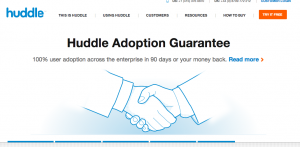Profitability is one goal that most of the SaaS CEOs who ask me for help all share, and SaaS customer retention is the key to achieving that goal.
Though, while they’re all focused on achieving profitability, how that is measured varies from company to company, for the sake of this post we’ll consider profitability to be achieved once the Customer Acquisition Costs (CAC) have been paid back and the ongoing contribution margin is positive.
So the reality around Customer Churn is that for every customer you lose through attrition, cancellations, or non-renewals – you have to acquire one new customer just to break even… and that’s a tough way to grow!
If you think you’re doing a good job acquiring customers, but know you’re not doing a good job keeping them, revisit that first assumption.
— Lincoln Murphy (@lincolnmurphy) March 3, 2014
SaaS Customer Retention Math
Consequently, if you want to grow, you need to acquire TWO new customers just to grow by ONE net new customer.
1-1+1=1
You’ll recognize that as the the anti-growth math from my post about how Customer Churn can absolutely kill the Growth of your business but Customer Retention is a Growth Accelerator.
Clearly, a growth strategy where you have to continually work to replace former customers with two new customers to come out with one net new customer isn’t really ideal.
So in addition to Churn being the enemy of growth and Customer Retention being the Growth Accelerator…
…Customer Retention is also the Profit Accelerator.
Retaining customers for a longer period of time – in Software-as-a-Service (SaaS) we often see 3 – 5 year customer lifetimes (and those are getting longer, not shorter) – dramatically increases the customer Lifetime Value (LTV) for that customer and improves your average LTV.
Beware of Profit-Draining Customers
You have to be aware that some customers can actually cost you money, like those who churn out too early and didn’t stay long to even cover their acquisition or on-boarding costs.
It’s one thing to work hard, spend a lot of money, create efficient methods of attracting prospective customers to your service and otherwise creating an efficient customer acquisition process.
It’s quite another to get your customers on-boarded and fully adopting your service in a timely manner.
The data shows that the faster you get your prospects started in your Free Trial, the more likely they are to convert to a paying customer.
Likewise, the faster you get them on-boarded and your service adopted within their organzation after becoming a customer, the more likely they are to stay a customer… for a long time.
This is why a company like Huddle offers “100% user adoption across the enterprise in 90 days or your money back”… it’s a risk reversal tactic that helps the customer feel better about the decision, sure, but Huddle – who’s been in market for a while – has likely looked at the data and determined that if they get customers engaged fully within the first 90 days they’re likely to stay on for the full Estimated Lifetime (eLT) in our plans… maybe 3-5 years.
And Huddle probably saw in their data that customers who aren’t fully engaged after 90 days don’t stay customers very long… perhaps not even long-enough to pay back what it cost to acquire them in the first place.
So the real formula that matters here is this:
SaaS Customer Retention + Expansion Revenue = Profit Acceleration
On the flip side, retaining customers for a longer period of time increases the profitability of that customer, but not just by keeping them paying the same thing for the entire lifetime.
No, customers who stay longer are more likely to not just stay a customer, but to pay you more – above the sales price they originally signed-on at – as they continue to use more and more of your SaaS application – what’s called Expansion Revenue.
Simply put, it’s easier to promote cross-sells and up-sells to existing, happy customers who are realizing value from your service than those that have churned out (obvious) or those that are a churn threat (less obvious).
In fact, customers who are a churn threat or who do churn out – likely spent – or will spend – less money with you reducing your profitability and making them a drag on your overall LTV metric (which could have a significant negative drag on your overall company valuation).
It’s up to you to ensure that you are keeping your customers happy – that is, continually ensuring they are Realizing Value from your service – so that they not only stick around but pay you more and more to use your service.
Your Long-Term Profitability Plan
So your long-term profitability plan for your SaaS company should look something like this:
- Create efficient and scalable methods of acquiring customers that reduces CAC over time (including ‘viral’ elements)
- Design and Engineer an engagement and on-boarding process that quickly allows the customer to realize value (including your Free Trial)
- Provide your customer the continual realization of value they require to stick around for a long time by creating an environment both in-app and through your operations that ensures this happens
- Design and Engineer a method of triggered up-selling and cross-selling that drives your customers toward expanded usage of your service and expanded revenue – and profitability – for you




